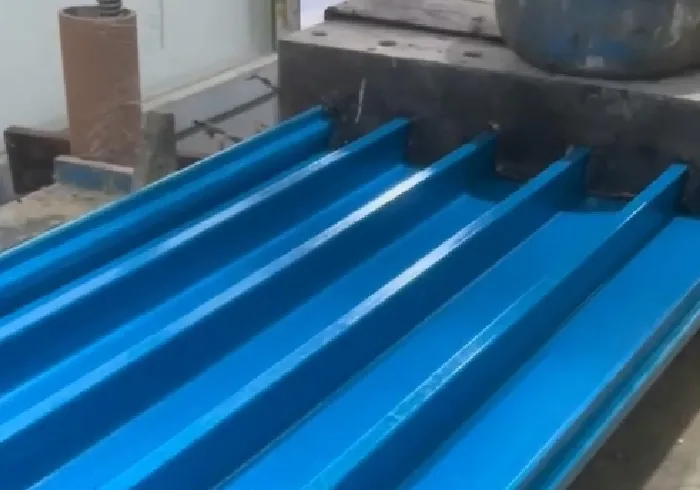loading...
- No. 9, Xingyuan South Street, Dongwaihuan Road, Zaoqiang County, Hengshui, Hebei, China
- admin@zjcomposites.com
- +86 15097380338
- Welcome to visit our website!
Applications and Benefits of Fiber Reinforced Polymer Reinforcement Bars in Construction
The Advantages and Applications of FRP Reinforcement Bars
Fiber Reinforced Polymer (FRP) reinforcement bars are increasingly being used in the construction industry as an alternative to traditional steel reinforcement. This innovative material is composed of high-strength fibers, such as glass, carbon, or aramid, combined with a polymer resin. The unique properties of FRP bars make them particularly suitable for specific applications where steel reinforcement may not be ideal. This article explores the advantages and diverse applications of FRP reinforcement bars.
Key Advantages of FRP Reinforcement Bars
1. Corrosion Resistance One of the most significant advantages of FRP reinforcement bars is their excellent resistance to corrosion. Unlike steel, which can deteriorate when exposed to moisture, chemicals, or extreme environmental conditions, FRP bars do not rust or corrode. This property makes them suitable for structures in coastal areas, chemical plants, or other harsh environments where traditional materials may fail.
2. Lightweight FRP bars are significantly lighter than their steel counterparts. This reduction in weight not only simplifies handling and transportation but can also lead to lower costs in terms of construction equipment and labor. The lightweight nature of FRP also allows for more straightforward integration into existing structures without requiring additional structural support.
3. High Strength-to-Weight Ratio FRP bars possess a high strength-to-weight ratio, meaning they can provide strong reinforcement while maintaining a lower weight. This characteristic is particularly beneficial in applications where structural integrity is critical, yet overall weight needs to be minimized.
4. Non-Magnetic and Non-Conductive FRP reinforcement bars do not conduct electricity or magnetism, making them ideal for applications in locations sensitive to electromagnetic interference. This includes facilities such as hospitals, data centers, and laboratories where electronic equipment could be disrupted.
5. Durability Beyond corrosion resistance, FRP bars offer excellent fatigue resistance and can endure extreme temperatures and environmental conditions. Their durability contributes to the longevity of structures, reducing maintenance costs over time.
Diverse Applications of FRP Reinforcement Bars
frp reinforcement bars

The versatility of FRP reinforcement bars allows them to be used in a wide range of applications
1. Bridges Given their corrosion resistance and lightweight properties, FRP bars are increasingly used in bridge construction and rehabilitation. They help improve the lifespan of bridges while minimizing the need for routine maintenance associated with traditional steel reinforcements.
2. Parking Structures The use of FRP in parking garages is growing due to its resistance to chemicals found in fuels and oils. FRP reinforcement bars help enhance the durability of these structures, making them more cost-effective over time.
3. Marine Structures In marine environments where exposure to saltwater poses a significant threat to steel, FRP reinforcement bars are the preferred choice. They are utilized in the construction of docks, piers, and other waterfront structures to ensure longevity and performance.
4. Highway and Roadway Infrastructure The lightweight and durable nature of FRP bars make them suitable for enhancing the performance of pavements and road bases. Their use can lead to reduced cracking and longer-lasting road surfaces.
5. Seismic Retrofitting With their non-corrosive properties and high performance, FRP bars are used in retrofitting applications to enhance the seismic performance of existing buildings. Their incorporation can help strengthen structures against potential earthquake forces.
Conclusion
As the construction industry continues to seek innovative solutions to enhance efficiency and sustainability, FRP reinforcement bars have emerged as a compelling option. Their numerous advantages—such as corrosion resistance, lightweight nature, and durability—make them suitable for a wide range of applications in both new constructions and retrofitting projects. As awareness grows about the benefits of FRP, it is likely that their use will expand further, revolutionizing traditional building practices and paving the way for more resilient structures.
-
The Rise of FRP Profiles: Strong, Lightweight, and Built to LastNewsJul.14,2025
-
SMC Panel Tanks: A Modern Water Storage Solution for All EnvironmentsNewsJul.14,2025
-
GRP Grating: A Modern Solution for Safe and Durable Access SystemsNewsJul.14,2025
-
Galvanized Steel Water Tanks: Durable, Reliable, and Ready for UseNewsJul.14,2025
-
FRP Mini Mesh Grating: The Safer, Smarter Flooring SolutionNewsJul.14,2025
-
Exploring FRP Vessels: Durable Solutions for Modern Fluid HandlingNewsJul.14,2025
-
GRP Structures: The Future of Lightweight, High-Performance EngineeringNewsJun.20,2025
